Effortless Eats
Effortless Eats is a project designed to simplify meal planning. This application addresses the challenges of individuals to save time, eat healthier, and manage their budget effectively. This application transforms meal preparation into a simple and enjoyable experience.
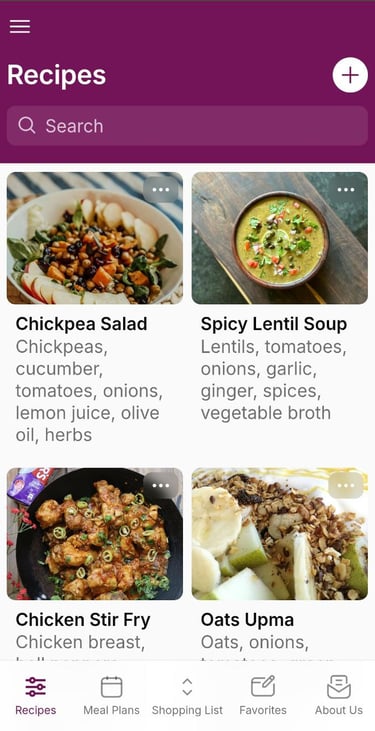

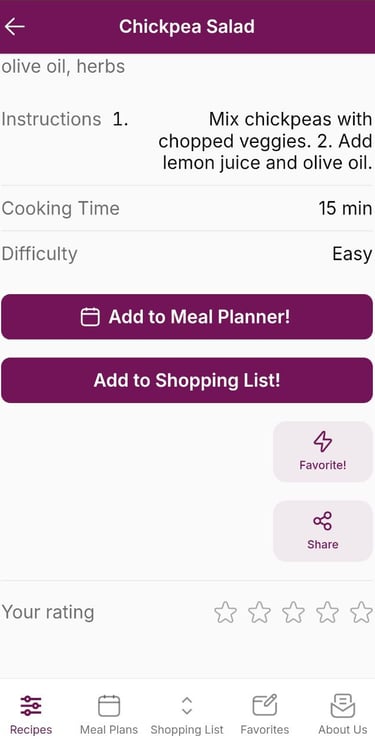

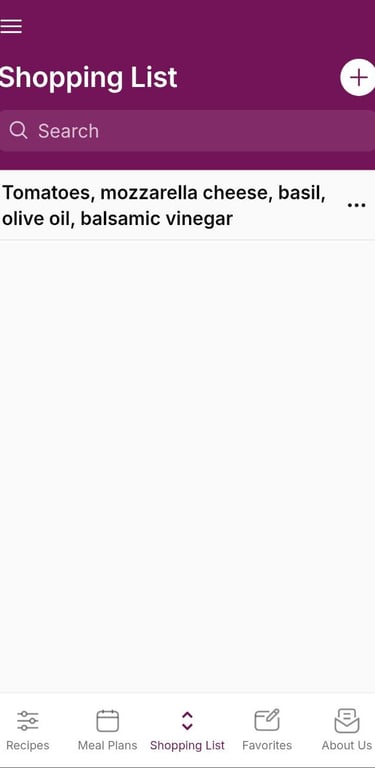

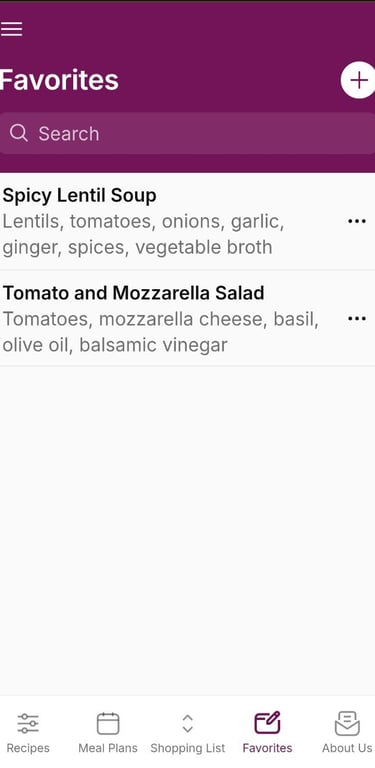

Customer Challenges/Why
Meal planning can feel like another demanding task for those already pressed for time. Dedicating even a short period to it can seem impossible amidst packed schedules. The sheer volume of recipes online further complicates matters, leading to decision fatigue and the daunting task of sifting through countless options without knowing which will be reliable or suit dietary needs. Compounding these issues is the challenge of organizing grocery shopping efficiently. without a clear plan and list, trips to the store can become time-consuming and result in forgotten ingredients, undermining the very purpose of meal planning and adding to the overall frustration.
Customer persona
User stories & Acceptance criteria
Functional User Stories
Feature 1: Quick Recipe Filtering by Preparation Time
User Story 1: As a busy professional, I want to quickly find easy recipes that take minimal time to prepare so that I can eat a proper meal even when I'm busy.
1.1: As a time-constrained professional, I want to filter recipes by preparation time.
Acceptance Criteria: The system should be able to filter recipes to see only those that take under 15 minutes or under 30 minutes to prepare.
1.2: As a time-constrained professional, I want to easily see the total time needed for each recipe.
Acceptance Criteria: The system should clearly display the estimated preparation time and cook time for each recipe.
Feature 3: Budget-Friendly Recipe Discovery
User Story 2: As a budget-conscious student, I want to find easy and affordable recipes so that I can eat well without spending too much money.
2.1: As a budget-conscious student, I want to browse recipes tagged as "budget-friendly".
Acceptance Criteria: The system should allow browsing recipes based on a "budget-friendly" tag.
2.2: As a budget-conscious student, I want to filter recipes by price range.
Acceptance Criteria: The system should provide options to filter recipes by price (e.g., $, $$, $$$).
Feature 3: Weekly Meal Planning Interface
User Story 3: As a user, I want to add recipes to a meal plan for the week so that I don't have to think about what to eat every day.
3.1: As a user, I want to be able to schedule recipes for different days of the week.
Acceptance Criteria: The system should provide a weekly calendar or planner interface where I can assign recipes to specific days.
Feature 4: Automated Shopping List Generation
User Story 4: Shopping List Generation: As a user, I want the app to generate a shopping list based on my meal plan so that I can easily buy all the necessary ingredients.
4.1: As a user, I want the system to automatically create a shopping list from the recipes in my meal plan.
Acceptance Criteria: The system should automatically compile a list of all necessary ingredients whenever a user adds recipes to their meal plan.
4.2: As a user, I want to edit the generated shopping list.
Acceptance Criteria: The system should also allow the user to modify ingredient quantities, remove items they already have, and add other necessary items to the shopping list.


Research
Our research with 20+ potential users across demographics revealed significant challenges in the meal planning process:
Lack of time: 75% of survey respondents cited this as their primary reason for ordering takeout
Ingredient sourcing: 75% face challenges finding all required ingredients
Time management: 75% struggle with managing their time while cooking
Recipe overwhelm: 50% find it challenging to locate suitable recipes among endless options
Inefficient planning methods: Most users rely on scattered approaches (notes apps, mental planning, spontaneous decisions)
These challenges lead to food waste, unhealthy eating habits, and frustration for home cooks. Traditional meal planning tools are often too complex, requiring significant time investment and offering features that most users don't need.
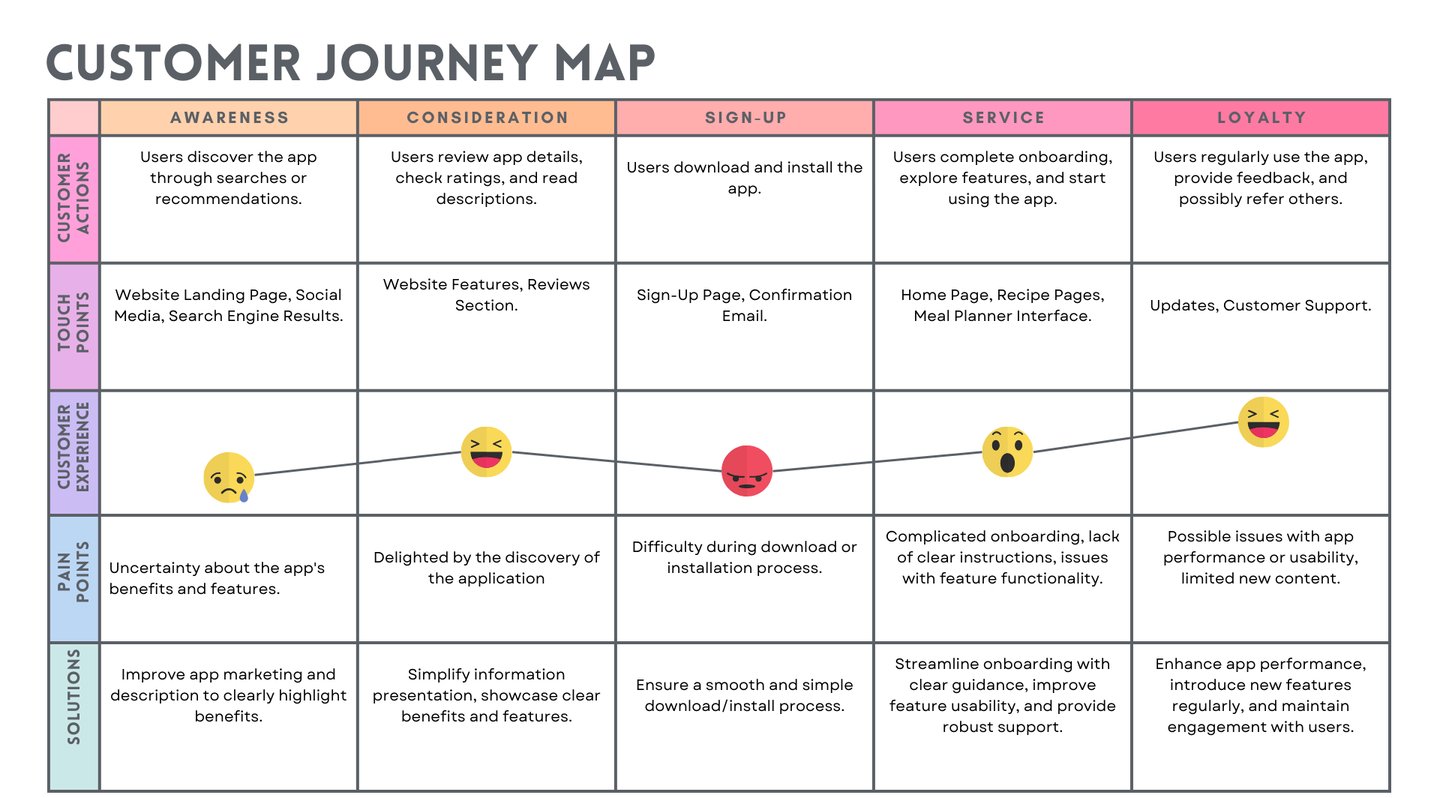

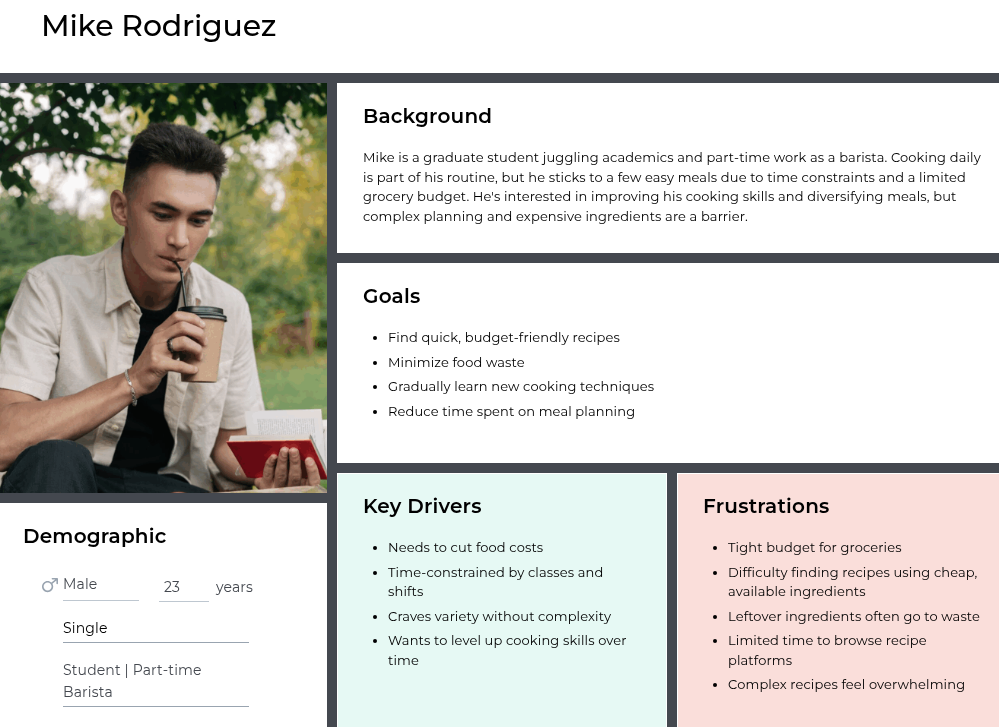

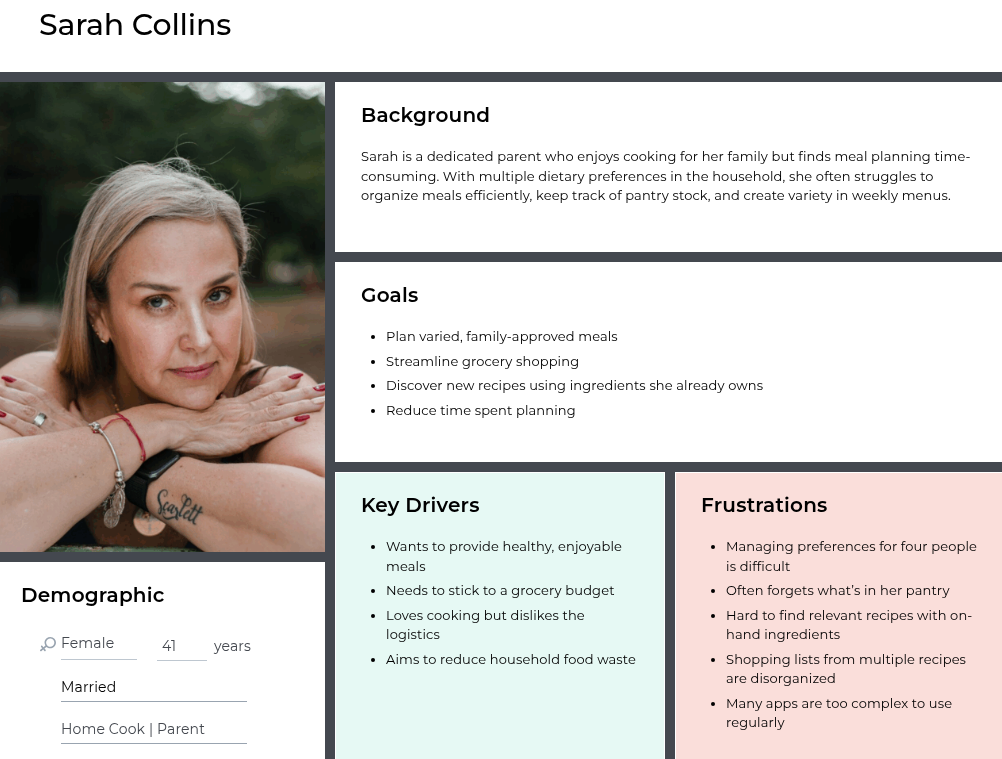

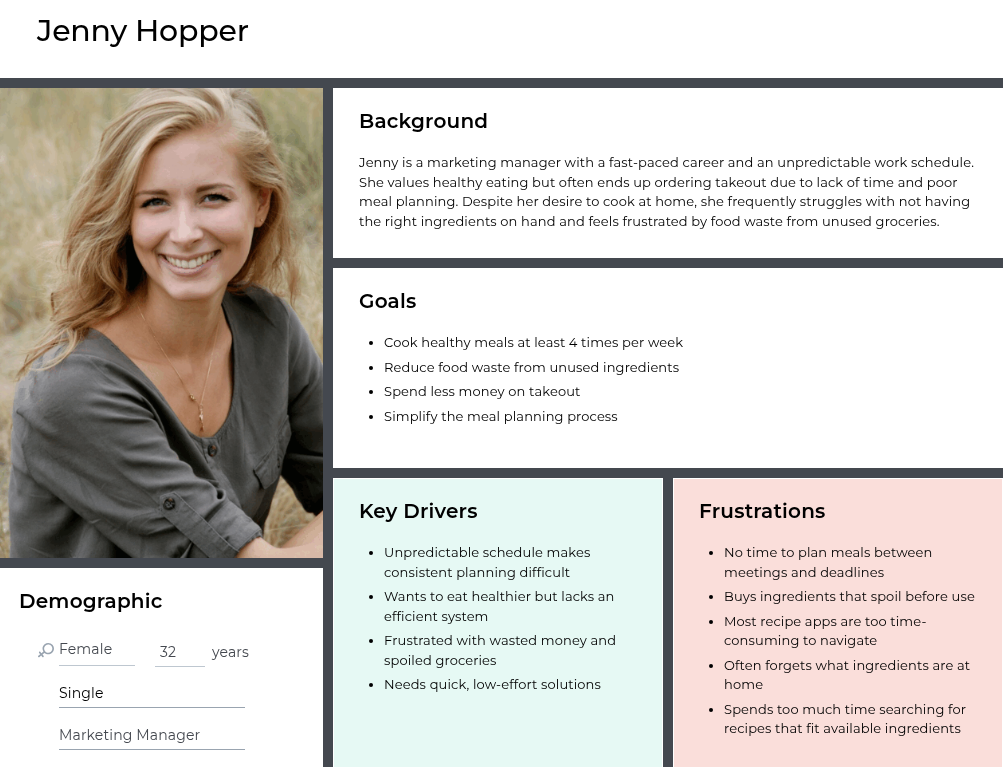



Customer Segmentation
Initial Sketches & Wireframes
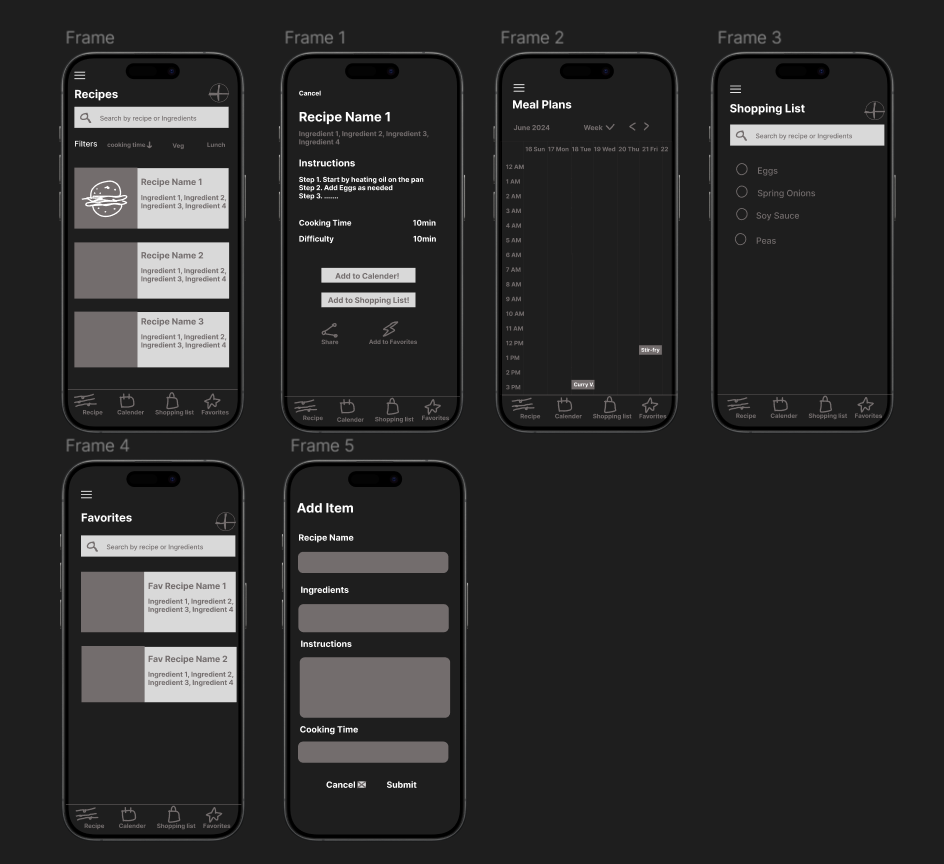

Feature Prioritization
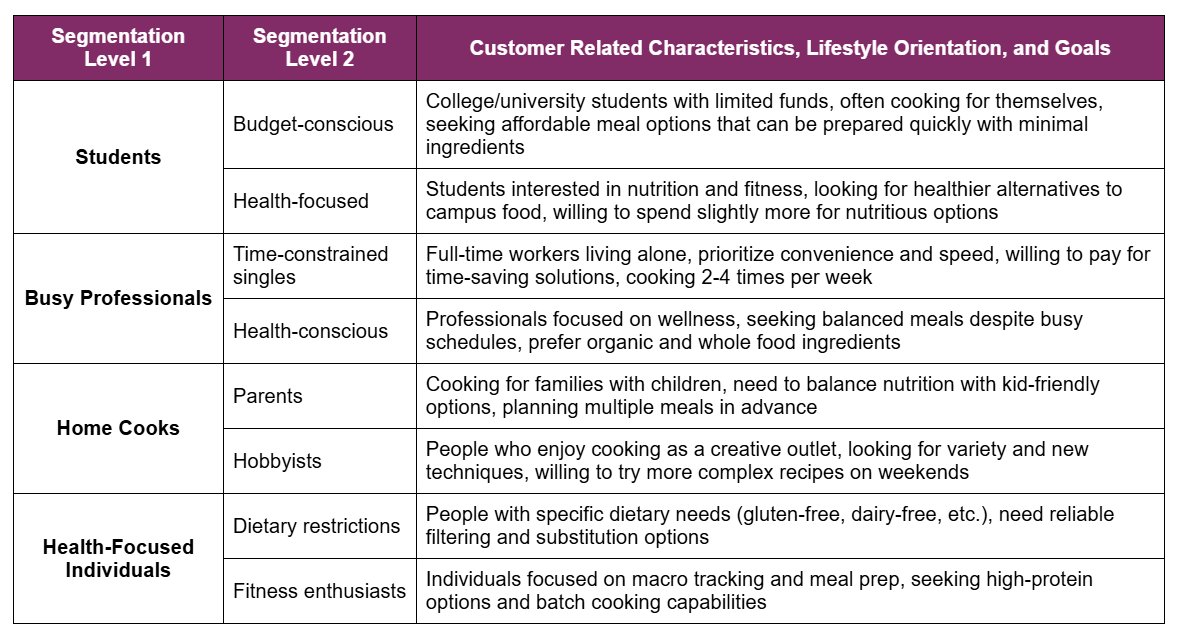

Usability Testing
Before diving into development, I conducted in-depth interviews with 5 users across our target audience, using mid-fidelity wireframes to validate the core concepts of Effortless Eats. This direct engagement provided crucial insights:
Key Testing Findings:
Users encountered confusion with the initial navigation.
The "Add to Calendar" feature wasn't straightforward.
More options were needed to filter recipes effectively.
Users desired a faster way to add items to their shopping list.
Turning Feedback into Action: My Development of the MVP
Armed with this valuable user feedback, I developed the functional Minimum Viable Product (MVP) of Effortless Eats, focusing on addressing the identified pain points. The MVP includes:
Ingredient-based recipe search
Automated shopping list generation
Basic meal planning calendar
Recipe saving functionality
Foundational recipe filtering
User profile creation
Minimum Viable Product (MVP)
Product Roadmap
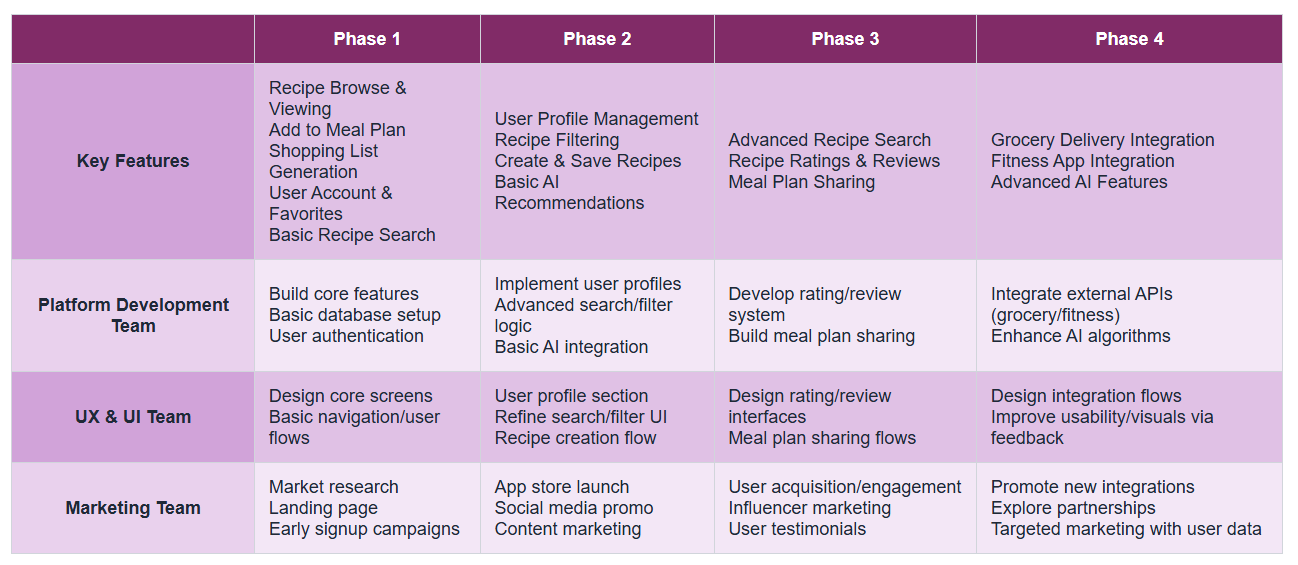

System architecture
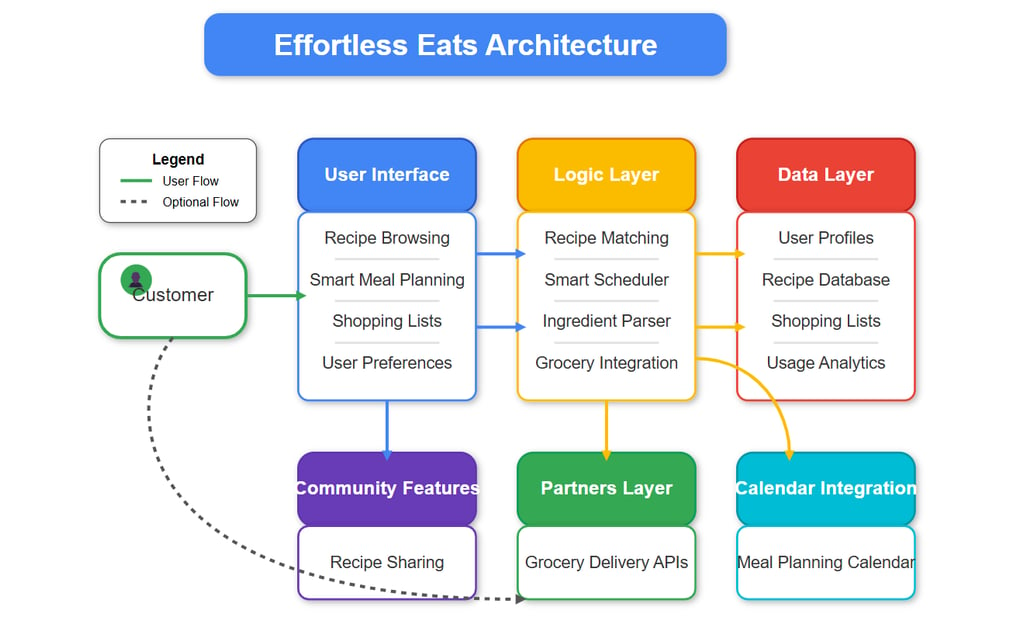



Risk & Mitigation
Technical Risk: Integration challenges with recipe databases and scaling issues with search functionality.
Likelihood: High
Impact: High
Mitigation: Start with a curated, limited recipe database before expanding. Implement efficient indexing for ingredient-based searches.
User Adoption Risk: Difficulty changing established meal planning habits.
Likelihood: Medium
Impact: High
Mitigation: Design an intuitive onboarding process with immediate value delivery and minimal friction.
Market Risk: Users may not transition from free to premium services.
Likelihood: Medium
Impact: High
Mitigation: Focus on delivering core value in the free version while creating compelling premium features that solve real pain points.
Competitive Risk: Larger platforms with more resources entering the space.
Likelihood: Medium
Impact: Medium
Mitigation: Differentiate through simplicity and focus on specific user segments rather than trying to compete on features.
Data Risk: Privacy concerns around food preferences and shopping habits.
Likelihood: Low
Impact: Medium
Mitigation: Implement transparent data policies and give users control over their information.
Business model
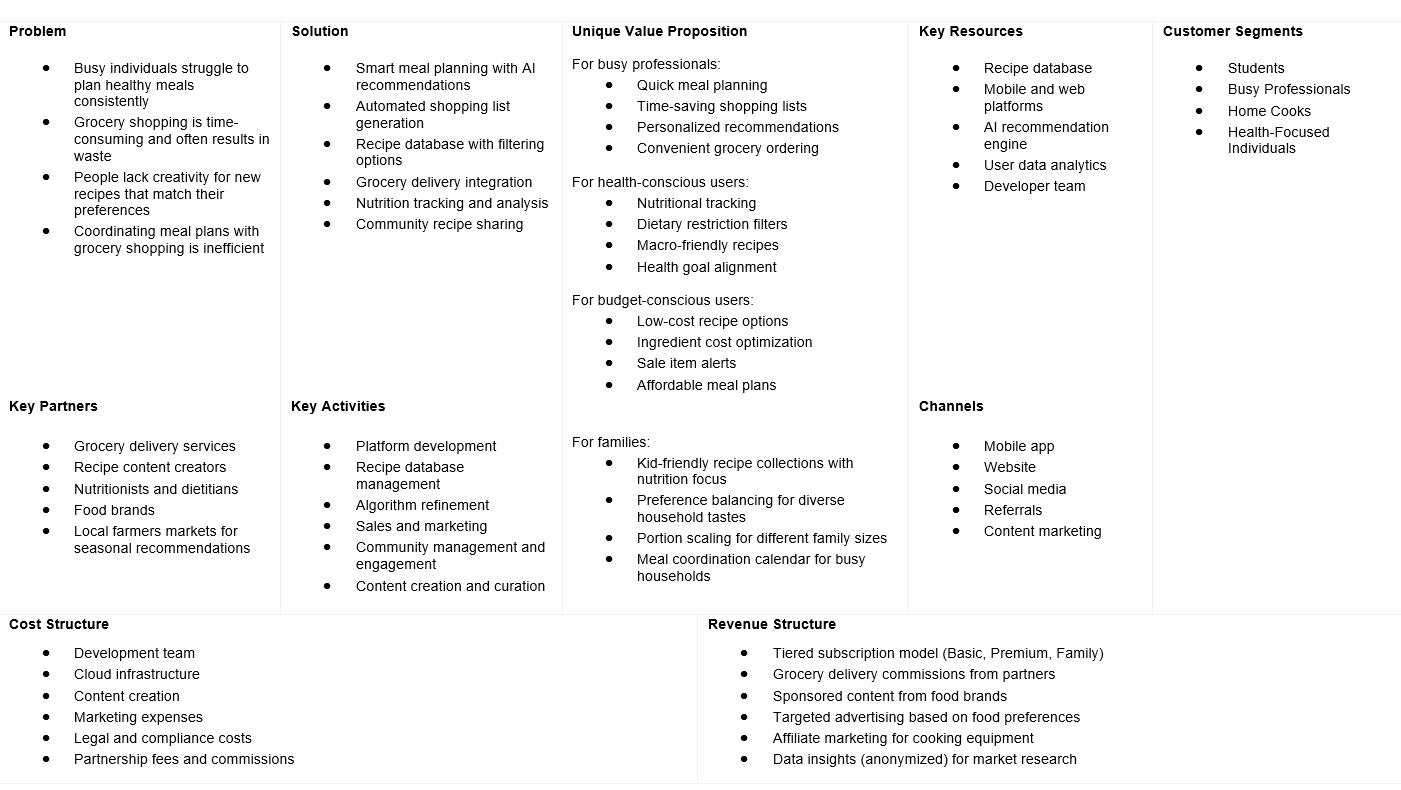

To provide users with a diverse range of meal options, Effortless Eats utilizes a dual approach for sourcing recipes. Initially, a set of foundational recipes has been added by the creator to get users started. Furthermore, the MVP includes functionality for users to personally add and share their own favorite recipes within the app, fostering a community-driven collection of meal ideas.
Effortless Eats Application
I had the pleasure of working with Rashmika for a year, and she swiftly became an invaluable part of our team. Despite being fresh out of college, she adapted quickly and demonstrated remarkable intelligence and a strong work ethic. Her ability to manage client relationships with finesse and ensure their satisfaction was impressive. Her dedication and positive attitude made a lasting impact, and I am sure that she will surely be an asset wherever she goes.
Tanya, Manager

★★★★★
CONNECT
Let's collaborate and bring your vision to life.
COLLABORATE
© 2025. All rights reserved.

